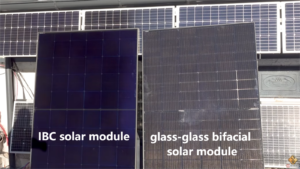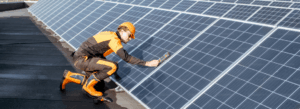This article analyzes key trends and growth drivers in the photovoltaic industry by 2025, highlighting opportunities amid the global energy transition.

1. Supply and Demand: Balancing Dynamics and Expanding Needs
Easing Supply-Demand Imbalances
With policy support and increased market self-regulation, the photovoltaic industry is gradually returning to orderly competition. Outdated production capacities are being phased out, optimizing the structure across the supply chain. By 2025, supply-demand dynamics are expected to stabilize, with improved industry performance, price normalization, and profitability returning to reasonable levels, ushering in a new growth cycle.
Global Demand Growth
Global energy transition and the decreasing costs of photovoltaics are enhancing economic viability, driving continuous growth in demand. While installation growth rates in traditional markets such as Europe and North America are leveling off, emerging markets, driven by energy transition efforts and resource advantages, are expected to achieve high growth from a low baseline. By 2025, global new photovoltaic installations are forecast to maintain an annual growth rate of over 10%, with module demand rising to 650–700 GW.
2. Technological Advancements: Breakthroughs in Cell Technology and Process Optimization
Accelerating Innovation in Solar Cell Technology
- TOPCon Technology: Entering a phase of efficiency enhancement, with further optimization techniques being introduced by leading manufacturers.
- HJT and xBC Technologies: Scaling up with distinct technological advantages, expanding market share. Amid global patent competition, collaborative efforts and expansion plans are poised to drive further growth in production capacity.
- Perovskite Technology: Pilot production lines are being established, with large-scale equipment shipments anticipated to enable gigawatt-scale production lines by 2025, laying the foundation for commercialization.
Process Optimization
- Improved Processes: Technologies such as LECO/LIF are replacing conventional laser SE processes, becoming new standards for high-efficiency production.
- Material Innovations: Technologies like silver-coated copper and copper electroplating are advancing, reducing costs while improving efficiency.
- Component Enhancements: The adoption of SMBB and 0BB technologies is boosting solar cell performance and reducing module manufacturing costs.
Increased Smart Manufacturing and Sustainability
The photovoltaic industry’s level of intelligence is continuously improving, with smart and green manufacturing practices becoming increasingly integrated. These advancements optimize production efficiency, enhance the supply capability of smart photovoltaic products, and support overall sustainability in the sector.

3. Market Structure: Competitive Dynamics and International Opportunities
Expanding Advantages of Leading Companies
Leading enterprises with superior technology, cost efficiency, and market share are expected to further strengthen their position in the global market. Their enhanced competitiveness will enable them to capture greater market share and profitability.
Challenges for Smaller Players
Smaller companies, with relatively weaker resources in funding, technology, and market access, may face challenges such as reduced orders, idle capacities, and operational difficulties amid intensified competition. This trend is likely to drive industry consolidation and optimization.
Global Opportunities for Equipment Manufacturers
The ongoing global energy transition is creating new opportunities for photovoltaic equipment manufacturers. Growing installation demand and a preference for cost-effective and efficient technologies provide a broad market landscape for advanced equipment suppliers.
4. Policy Environment: Support and Incentives
Policy-Driven Growth
Governments worldwide are implementing policies to promote the healthy development of the photovoltaic industry, including restrictions on inefficient capacity expansion, guidelines for fair competition, and incentives for green energy investments. These measures are instrumental in stabilizing supply-demand dynamics and driving technological progress.
Incentives Boosting Market Expansion
Tax credits, net metering policies, and green energy subsidies continue to drive growth in photovoltaic and energy storage markets. These initiatives provide a solid foundation for the industry’s expansion while attracting increased investment.
5. Regional Markets: High-Growth and High-Value Opportunities
High-Value Markets
Certain regions remain highly profitable, supported by the growing economic feasibility of photovoltaic systems. These markets are expected to continue attracting significant investment and industry focus.
Emerging Growth Markets
Regions with abundant solar resources and strong energy transition needs are becoming key drivers of global photovoltaic installation growth. Declining component costs and supportive policies further enhance their growth potential.
Conclusion:
Through the combined drivers of technological innovation, policy support, and rising demand, the photovoltaic industry is poised for sustained growth, contributing significantly to global energy transitions and sustainable development.
Since 2008, Maysun Solar has been dedicated to producing high-quality photovoltaic modules that contribute to combating climate change. As we approach 2025, we remain committed to driving innovation and supporting the global renewable energy transition. Our advanced technology in IBC, HJT, TOPCon, and balcony solar panels ensures exceptional performance and reliability, capable of withstanding harsh weather conditions for long-term operation.
We have established offices and warehouses in multiple countries and built lasting partnerships with top installers to provide comprehensive support. Looking toward 2025, we aim to empower more sustainable energy projects globally. For the latest quotes or any inquiries related to photovoltaics, feel free to reach out to us—we’re here to help!

After the Iberian Blackout How Can Enterprises Reshape Their Energy Security Systems
The 2025 Iberian blackout drew widespread attention across Europe. This article analyzes grid vulnerability, enterprise energy risks, and the deployment path of “solar + storage + EMS” systems to help businesses build a controllable and secure energy structure.

Photovoltaic Fire Safety Guide: How to Reduce the Risk of Power Plant Fires?
The risk of fire in photovoltaic power plants is on the rise. This article, based on European policy standards, provides a detailed explanation of design optimization, operation and maintenance strategies, and emergency response measures to enhance fire safety levels.

IBC Solar Modules vs. Bifacial Glass-Glass Solar Modules: Which Is More Suitable for Low-Light Conditions?
Discover the performance of Maysun Solar’s IBC full-black solar modules and bifacial glass-glass modules under low-light conditions. Based on real-world test data, this article offers scientific guidance for photovoltaic system selection to help you optimize energy efficiency and investment returns.

How to Design Low Maintenance High Yield Commercial and Industrial Photovoltaic Systems
How to build low-maintenance high-return photovoltaic plants This article analyzes the cost challenges and optimization paths of commercial and industrial photovoltaics in Europe helping enterprises achieve payback within 5–6 years and steadily increase long-term returns

How Building-Integrated Photovoltaics (BIPV) is Changing the Commercial and Industrial Rooftop Solar Market
BIPV in Europe is reshaping the landscape of commercial and industrial rooftop photovoltaics, integrating building and power generation functions while offering policy incentives, economic returns, and ESG value. This article analyzes the advantages of BIPV in technological innovation, business models, and investment returns, helping enterprises seize the opportunity for green transformation.

How to Effectively Clean and Intelligently Maintain Photovoltaic Systems for Optimal Performance?
Explore how scientific cleaning and intelligent maintenance can ensure the efficient operation of commercial and industrial photovoltaic systems. Practical advice covers module cleaning frequency, monitoring system configuration, and long-term strategies for energy savings and performance enhancement.



